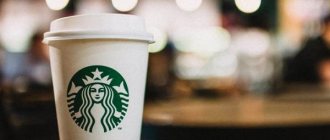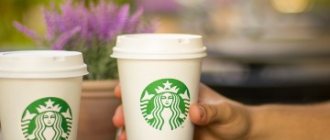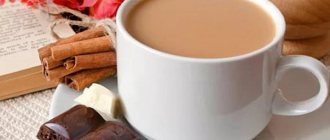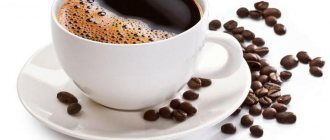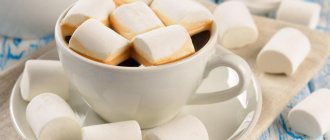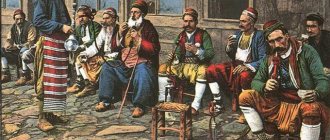It has established itself as an excellent coffee shop in the world market. Many people, when they come to Moscow, dream of visiting these establishments and tasting delicious coffee. Aspiring baristas crave advice from Starbucks employees and definitely want to learn their secrets.
Is it possible to find Starbucks establishments in Moscow, addresses of branches and reviews about this coffee shop - everything is described in the article. Tips that may be useful for fresh coffee lovers will also be presented.
Three friends wanted to change their lives
Zev Siegle, Gordon Bowker and Jerry Baldwin were natives of different cities, but in the early 60s of the last century they studied together at the University of San Francisco and were friends. The guys were full of plans and hopes and continued to communicate after graduation. Zev Siegle taught history, Jerry Baldwin taught English, and Gordon Bowker mastered the profession of writer.
“At that time, Gordon, Jerry and I often discussed and came up with ideas for business, we all wanted to change our lives and do something large-scale, meaningful and meaningful. We started meeting every few weeks to exchange ideas, and one day at lunch we ordered an espresso that turned out to be very bad,” Siegle recalled in an interview with The Guardian in 2016.
At that time, good coffee was not brewed in the USA; there was neither demand nor culture for consuming the drink. Gordon Bowker's idea to open a shop selling different types of coffee seemed fresh and interesting to his friends.
The first Starbucks opened in 1971. The assortment included 30 varieties of coffee beans by weight. The drink was brewed only for tasting.
Tips for coffee lovers
Almost all Starbucks coffee shops in a modern format offer not only delicious coffee, but also a snack. The menu includes both hot dishes and snacks with pastries. To save time, you can come here for lunch. If time is very limited, then it is acceptable to take the order with you to take away.
One of the nuances of the location is the maximum proximity to metro stations. Starbucks addresses in Moscow, located near the metro, are located in many points of the city. Here are some of them:
- Kievsky Station Square, building. 2. (metro station "Kyiv").
- Arbat, building 19/2 (metro station "Arbatskaya").
- Perenesenskaya Embankment, building. 10. (m. “International”).
- B. Tulskaya street, building. 11 (metro station "Tulskaya").
- Tverskaya-Yamskaya, building. 21 (metro station "Belorusskaya", metro station "Mayakovskaya").
- B. Dmitrovka, 5/6 (metro station "Teatralnaya", metro station "Okhotny Ryad").
- st. Balchug, 3/2 (metro station "Novokuznetskaya").
Starbucks has a range of low-calorie drinks that are suitable for consumption during fasting and during diets. You should not deprive yourself of your favorite coffee if your health allows you to enjoy this divine drink.
Word of mouth in action
When it was decided that there would be a store, the partners chipped in $1,500 each and took out a $5,000 loan from the bank. We found a convenient walk-through location on Western Avenue in Seattle.
With naming, everything was simple: Bowker proposed the name Starbucks in honor of the character in the novel “Moby Dick” by Herman Melville - the first mate of Captain Starbuck, a kind, caring person and a coffee lover. Friends in the humanities liked the idea.
The business chosen as a role model was founded by Alfred Peet, a Dutch immigrant and founder of the Peet's coffee retail chain. Pete began importing fine Arabica coffee to the States back in the 1950s. The companions visited Pete's shop in San Francisco, learning the art of roasting and running a business. Peet's became the first coffee bean supplier for Starbucks.
Siegle quit teaching and traded in a store on weekdays alone - the partners could not leave their jobs in order to maintain financial stability. On weekends, all three stood behind the counter. The partners didn't just sell: they introduced a tradition of communicating with customers and sharing knowledge about good coffee. Such friendly communication launched word of mouth. Therefore, the customer base grew quickly. Cafes and restaurants in Seattle began to cooperate with Starbucks, and already in the first 9 months, Starbucks' turnover exceeded $46 thousand. It was a success, despite the fact that the company was just breaking even - all the proceeds went to paying bills, rent and purchasing goods.
It must be said that Siegle was the most active and inspired ideologist of the coffee business. Now he would be called a startuper. He was literally eager to expand the enterprise, take over related areas and open new stores. His companions were satisfied with a stable small income from a couple of shops.
In the five years since opening, Starbucks has been growing, opening three more stores in Seattle and Edmonds, and Siegle launching gourmet coffee ware. In 1975, the first large-scale problem occurs: a cold winter in Brazil destroys the coffee harvest, prices for raw materials soar, Starbucks is forced to raise product prices. Sales collapsed. On top of that, the building that housed the company's first store was about to be demolished by the city administration.
The main retail location was moved to an excellent location nearby - the 1912 pavilion of the Pike Place City Market. To survive the crisis, the founders took out a $95,000 loan from Rainier Bank. As their income grew, the trio purchased a second-hand roaster (a machine for roasting large volumes of coffee beans) in Holland and began experimenting with roasting techniques, creating their own blends and flavors. They rented a small warehouse on the outskirts of town and turned it into a roasting shop.
Everything was modest until Howard Schultz came along
By 1977, coffee prices dropped, sales went up, and the store’s favorable location in the city market contributed to its popularity. Siegle was still eager to expand, and Starbucks opened a chain of grocery stores and stores selling coffee grinders. Most of the subsidiaries turn out to be unprofitable; Siegle conflicts with his partners, sells his shares to them and leaves Starbucks in 1980.
The company is closing subsidiaries and returning to basics: selling coffee. In 1981, revenue grew to $4.5 million. And in 1982, a fifth store opened in Seattle, where you could not only buy beans, but also freshly brewed coffee in a coffee bar.
At the same time, Howard Schultz, head of the American branch of the Swedish company Hammarplast, from which Starbucks bought drip coffee makers, was impressed by the growth of the coffee business. He became interested in pursuing a career at Starbucks, and in 1982 he was hired as head of the marketing department.
Schultz was a good marketer and constantly observed customers. He noticed that some people feel uneasy about their lack of knowledge about coffee varieties. He began training salespeople in customer focus, sales skills, and ordered brochures that helped customers learn about the company's products.
Howard Schultz was born on July 19, 1953 into a very poor family of a retired military man. Thanks to a sports scholarship, he studied at Northern Michigan University, becoming the first person in his family to receive a higher education. After studying, he worked at Xerox Corporation, headed the American branch of the Swedish Hammarplast, then came to Starbucks.
In 1983, Schultz went to Milan on behalf of the company to attend an international exhibition of household goods. Howard was impressed by the scale of the cafe industry: in Milan alone there were 1,500 of them. Inspired, he decided to turn the tiny Starbucks into a national chain of coffee shops.
Baldwin and Bowker did not accept the idea: they wanted Starbucks to remain a serious seller of coffee and equipment, and not turn into a cafe serving espresso and cappuccino.
Inspirational video for Starbucks' 50th anniversary
Birth of an Empire
Seeing that he could not convince Baldwin and Bowker to create a chain of cafes, Schultz left Starbucks in 1985 and founded his own chain of coffee shops called IL Giornale. The idea worked: the network quickly became popular and expanded to several cities.
In March 1987, Baldwin and Bowker decided to sell Starbucks, and Schultz quickly bought it using savings from the IL Giornale business and investor support. He combined all the assets under the Starbucks brand and created the concept of a cafe-store. This again turned out to be a great idea, business took off, and within four years the number of coffee shops grew to 100, located in Seattle, San Francisco and the suburbs. Starbucks entered a rapid period of expansion.
Starbucks listed shares on the NASDAQ stock exchange in 1992 at $17 per share. By the time of the IPO (initial public offering of shares on the market), the company already had 140 retail outlets, annual revenue was $73.5 million, and the market value of the chain was estimated at $271 million. On the stock exchange, Starbucks sold 12% of shares for $25 million. The funds received made it possible to double number of cafe shops over the next two years.
As Starbucks expanded, it targeted cities that had the largest number of mail subscribers (this statistic is available in the United States). Schultz argued that subscribers to magazines and newspapers were educated, wealthy, and interested in culture. Which means they are Starbucks’ audience. And the company rushed to conquer the East Coast, New York and Boston.
And today, according to Starbucks' marketing strategy, their target audience is middle-aged men and women with above-average purchasing power.
In Boston, the deal turned out to be especially successful. Starbucks decided to buy the local well-promoted chain The Coffee Connection of 25 coffee shops, so as not to waste energy on promotion. Together with the Starbucks chain, they took over the recipe for Frappuccino, a drink made from cappuccino, milk and ice cream. Frappuccino instantly gained popularity in all Starbucks coffee shops: now in the hot summer you could order cooling coffee in the coffee shop.
Starbucks in Moscow: addresses of establishments
The capital of Russia has become one of the large cities where there are fans of the American brand. Starbucks addresses in Moscow are located in 65 locations in the city, which receive customers and give them a charge of cheerfulness and warmth for the whole day.
The most popular branches are located at the following addresses.
- Kuznetsky Most street, building. 21/5;
- Myasnitskaya street, building. 9/11;
- Tverskaya street, building. 24;
- Serebryanicheskaya embankment, building. 29;
- Lev Tolstoy street, building. 16;
- Smolenskaya-Sennaya square, building. 27/1;
- Arbat street, building 19/2;
- Gashenka street, building 6;
- st. Arbat, building 38;
- st. Marshala Biryuzova, building. 32;
- st. Zemlyanoy Val, building. 33;
- st. Novoslobodskaya, building 4;
- st. Shchukinskaya, building 42.
Time to conquer the world
In 1996, Starbucks began opening stores outside of North America and quickly became the largest coffee chain in the world. By the late 1990s, Starbucks had about 2,500 locations in ten countries.
1996 – opening of a branch in Japan.
1998 - in the UK.
2002 - in Mexico.
2007 – in Russia.
In 2000, Schultz announced that he would step down as CEO but would remain chairman of the board of directors, a role that involved a shift away from day-to-day management and more freedom to manage his time. Schultz even bought an NBA basketball team, the SuperSonics, for fun.
The network continued to operate, and by 2007 it had more than 15,000 offices around the world (its own stores and franchises), but the global crisis came and business began to decline. The company's net losses for 2008 amounted to $6.7 million, and Schultz had to return to the post of CEO to save the brainchild.
The new old head of the company began tough reforms and implementation of a strategy he called the “Change Program.” Most decisions were based on the CEO's intuition, but were productive. Schultz later wrote in his book that this is what true leaders should do.
Product range
Howard Schultz personally replenished the assortment of Starbucks coffee drinks. He found recipes all over the world. He especially liked the coffee culture in Italy, so the recipes for most current drinks have Italian origins.
What is Starbucks? For the average consumer, this is, of course, primarily a product range. This company has a fairly wide range - about 80 thousand drinks, which often depend on the region in which a particular outlet is located.
Starbucks' assortment includes:
- hot coffee drinks;
- cold coffee-based drinks;
- teas;
- Dessert;
- ice cream;
- food: sandwiches, salads, sandwiches, ciabatta (in very small quantities);
- accessories with the Starbucks logo.
All drinks are served in glasses of various sizes, at the discretion of the buyer. Coffee, of course, has the greatest variety on the menu:
- latte;
- mocha;
- expresso;
- Kenyan;
- Americano;
- Guatemalan;
- macchiata;
- cappuccino;
- Ethiopian, etc.
The level and type of roasting of coffee beans is also different. A special spicy holiday roast is often made for Christmas. The most famous and popular cold drink among customers is Frappuccino. It is prepared on the basis of regular coffee with whipped cream, syrup and ice.
Desserts and pastries are also prepared according to our own recipes. All kinds of cheesecakes are especially popular. Starbucks dessert range:
- cakes;
- croissants;
- muffins;
- cheesecakes;
- brownie;
- donuts or donuts;
- tiramisu;
- cookies of various sizes and structures, etc.
The rest of the food is presented in a narrower range. This is understandable, otherwise Starbucks, famous for its coffee drinks, would turn into an ordinary eatery like fast food establishments.
“Change Program”: four steps that saved Starbucks from death
Step 1: Stop growth
It was time to admit mistakes: new coffee shops were springing up like mushrooms after rain, their quality left much to be desired, and the average bill was falling. Competitors opened hundreds of similar cafes, seeing the success of Starbucks. Howard closed the growth program and decided to return to the roots. He personally oversaw the closure of 900 stores and staff reductions. At the same time, a new Park Place Road blend was released to the market, showing that Starbucks is not just a coffee shop, but also a producer of excellent coffee.
Step 2: Bet on People
Starbucks was desperate to get customers back into its coffee shops. The company has bet on the power of the Internet, showing that it is ready to change. The website was updated to include a section with a list of ideas from consumers. Social networks and a loyalty program were developed. With the help of free Wi-Fi inside the establishments, customers could work remotely and stay in the cafe as long as they wanted.
The LEAN system was introduced for employees - the principle of lean production. They were convinced of the stability of their work, training, education and process modernization were carried out.
Starbucks began providing free Wi-Fi at all its locations in 2002 to encourage customers to stay longer.
Step 3: Each coffee shop should become the heart of the local community
The company is taking a completely new approach to the look of coffee shops: instead of replicating uniformity, designers should create a “local” look for each store within the corporate identity. Therefore, even now the design of coffee shops is different, but it always looks calm and cozy, complemented by the aroma of coffee. Music does not distract from conversations and work, the lighting is soft.
In all coffee shops, musical compositions are played synchronously. While drinking a latte in Moscow, rest assured that coffee lovers in Tokyo are now hearing the same music.
Step 4: Ethical and Green Production
Starbucks has always processed their own beans and come up with blends and flavors. To do this, they purchased coffee from farmers around the world, mostly small family businesses. When purchasing other products, preference was given to local manufacturers. In addition, the company tried to reduce environmental pollution: coffee grounds were turned into fertilizer, water consumption was reduced. Starbucks donated used cups for recycling and production of new cups.
In just one year, the supply chain was optimized by improving packaging materials and logistics processes. In 2008, only 30% of orders arrived on time and without damage, and in 2009 this was already 90%.
All four steps ultimately worked for the company's reputation, and by 2012, Starbucks had recovered financially.
However, there were also unpopular steps to cut costs: the closure of hundreds of coffee shops, layoffs, and the cancellation of bonuses.
Schultz stepped down again as CEO in 2022 (replaced by Kevin Johnson) and remained active in the company, serving as executive chairman until 2022.
In 2022, Starbucks has its chains in 80 countries around the world and operates more than 32,000 coffee shops.
How to open Starbucks
Since Starbucks is a huge company, it is simply unrealistic to lead it from one specific place. Only 30% of all the corporation's retail outlets in the world belong directly to the brand. The rest of the establishments operate as franchises. It is possible to open a coffee shop, but the process is very difficult. You will have to coordinate every smallest step with the company management. After all, it evaluates absolutely everything:
- room area;
- interior and design;
- location of the establishment;
- menu;
- music playing in the hall;
- location of all doors;
- color of walls, ceilings and floors, etc.
Some of the criteria may seem absurd, but according to the coffee company, every little detail matters. Therefore, it is not surprising that many applicants are rejected.
Starbucks Marketing Phenomenon: What Made It Successful
1. The concept of “third place”
Coffee shops are located only on busy streets and in crowded places. Initially, Starbucks was located exclusively on those roads along which many citizens have a home-work-home route. Sociologists have described the effect of such a space as a "third place" - a place where people can go to be away from home or work and relax.
The appearance of Starbucks in any place is a good sign, realtors love this company, and the usual rent is only $1 per year. There are cases when Starbucks was invited to open in places where other tenants left, for example, due to crime. When tenants returned, they found that the flow of customers had increased, as did the rent. But Starbucks still paid $1. Some brands only open locations in locations where there is already a Starbucks.
2. Prices are above average
Starbucks makes good coffee, not from the cheapest beans, and you can also order elite varieties of tea. Many buyers believe that quality products usually come with a high price. Starbucks has taken advantage of this belief and has maintained above-average pricing.
3. Personalization
All processes are clearly defined and employees are required to follow them. For example, the service process is structured like this: the client is warmly greeted by the barista, the guest makes an order and pays the bill. They ask him for his name and write it on the glass. When the order is ready, the barista addresses the customer by name. This should create the feeling that they were waiting for him, and he is personally very important for this establishment. When the guest leaves, they bid him a warm farewell.
“The success of Starbucks is not only an effective business model, but also an unconventional approach to consumer psychology. Without him, Starbucks would still be a regional chain where people would go just to drink coffee,” says British business consultant and author of a book about Starbucks, John Simmons.
According to legend, JK Rowling wrote the bulk of the first Harry Potter book in Starbucks, on napkins. Rowling herself, although she visited the coffee shop, denies the fact that she wrote the book on napkins.
Coffee in Game of Thrones: one of the best product placements in the history of TV series
#ProjectFAQ: Why is there no Starbucks in Perm?
Starbucks is an American coffee retailing corporation. Today it is the largest coffee company in the world with more than 20.5 thousand coffee shops in 64 countries.
Starbucks in the world
In Russia, the first Starbucks coffee shop opened in Moscow in September 2007. In the seven years since this significant event, more than 75 coffee shops have appeared in Russia, including in St. Petersburg, Yaroslavl, Rostov-on-Don, Krasnodar, Sochi and, since September 27, in Yekaterinburg. Next up is Tyumen, where the opening of Starbucks is scheduled for October 4.
What's so great about Starbucks? In theory, there is a clear answer to this question: the guys from Starbucks make really good coffee. Howard Schultz, the man who created Starbucks as we know it, is a true coffee fanatic in the best sense of the word. The stream of coffee from the coffee machine should flow as honey flows from a teaspoon, no more and no less. A bulky coffee machine should not hide the barista from the visitor, and the beans are stored in special bags that prevent moisture and oxygen from entering. If the coffee from this package is not completely consumed within a week, the beans go to the trash. It’s interesting that in the premises itself, everything is also thought out to the smallest detail, because a coffee shop is not a home, not an office, but a “third place” where people come to socialize, work, or just relax over a cup of coffee. Even the playlist at Starbucks is the same: the music in the coffee shop at Prague Airport will be played the same as at Starbucks in Phuket or Singapore.
Consistently excellent coffee is certainly one of Starbucks' main attractions, but don't forget that the company has created an entire coffee culture over its more than 20-year history. For example, the famous Starbucks tumblers - stylish thermal glasses - can be seen in the hands of coffee lovers on the go anywhere in the world.
However, if you think that Starbucks is doing well, then this is not entirely true. For example, in June 2014, the European Commission suspected the company of not the most honest tax schemes, when the network’s profits were redistributed between different branches in different countries. Thus, the tax base is significantly reduced. Suspicions of the use of similar schemes fell on other companies: Apple and Fiat Finance and Trade. At the same time, claims against Starbucks are related to the company’s activities in the Netherlands.
Starbucks in Perm
Whether Starbucks should be opened in Perm is a separate question. While this material was being prepared, we conducted a survey on a popular social network: is Starbucks needed in Perm? We will not raise the question of the representativeness of such a survey - we conducted it out of pure curiosity, and not for scientific purposes. And the results were as follows.
A total of 144 people took part in the survey. Of these, 58 (that is, 40.3%) answered: “Definitely needed. There’s great coffee, great pastries and stylish cups.” The majority - 81 people (or 56.3%) - voted for the option: “Not needed. We have many of our own coffee shops, no worse than the expensive Starbucks.” And the remaining 3.5%, represented by 5 people, answered in their own way in the comments. If we reduce all the answers to a single denominator, then the majority of respondents believe that the purchase of a Starbucks franchise by some Perm entrepreneur will negate all the vaunted quality of coffee.
Meanwhile, they worry in vain. As the Starbucks representative told Zvezda, the company does not sell franchises in Russia. Perhaps based on fears that a third party will not be able to meet Starbucks standards, and even maintain a high level of service. So the decision to enter the city is made by the company based on its strategic plans. However, representatives of the coffee corporation refused to answer questions directly. We never heard any answers to the question of who exactly makes the decision to enter the city, nor to the question about the specific requirements for the premises, the city or the entrepreneur.
The corporation's press service in response to our question:
— We are not ready to comment on the questions that you sent us. Unfortunately, we cannot disclose information according to our guidelines.
However, it is still possible to stand under the banner of a transnational coffee corporation. Some sources claim that the conditions for opening a coffee shop under the Starbucks banner can be negotiated individually. In particular, there is an option to enter into an agreement with the transfer of rights to use the brand and technology. However, if such an agreement is concluded, the owner of the new coffee shop will not receive the usual benefits of franchising and will not be able to count on advice and support from the company’s main management.
In addition, do not forget that the company has very strict requirements for the premises of the future coffee shop. For example, the front door should face strictly east or south, and in no case to the north. This is not a superstition, but an elementary concern for visitors: with this arrangement, maximum natural light is maintained, but the sun does not hit the eyes. Of course, the size of the room and its location are also strictly regulated, as is the interior decoration. All this requires considerable expenses and, according to the most conservative estimates, will cost the investor no less than $200,000. And how quickly will such costs be recouped?
In Perm, people drink a lot of coffee and enjoy it, but it’s unclear whether Starbucks will find its buyer. We turned to the founder of the Red Cup coffee shop chain, Ilya Gusev, for an expert opinion.
Ilya Gusev:
— There is always a free niche. In our city there is a shortage of small independent coffee shops in their pure form, that is, without food or alcohol. In fact, there are no coffee shops with alternative methods of brewing coffee, and this is a global trend - few people brew good coffee in Turk. But those who work in this direction will sooner or later form this market. In addition, the general level of barista training in the city is not high. Restaurateurs also underestimate the role of a cup of coffee on the menu. It is easier for them to rent a car and utensils than to buy and carry out the work of training staff and selecting grain.
The price level at Starbucks is significantly higher than the city average. Of course, there are brand loyalists who are willing to pay, but there are not as many of them as we would like. A plus, or rather a minus, is the discrepancy between real estate rental rates and the purchasing power of the population. In addition, we have heterogeneity of traffic in the city, a lack of good shopping centers and areas on the first lines.
I like Starbucks for its approach to workflow and organization. Howard Schultz is a legendary figure. There is a lot to learn from him. When you come to any of the chain’s coffee shops, you know exactly what you’ll get in your cup. In general, the best coffee is the one you like. And only you can decide where to buy it.
Whether Starbucks will appear in Perm is an unanswered question. However, the opening of coffee shops in Yekaterinburg and Tyumen allows us to hope that coffee magnates have set their sights on the Urals, and that Perm will soon have its own Starbucks.
Is Starbucks needed in Perm?
Bet on social networks
Starbucks does excellent SMM: the company knows how to communicate with users not only offline. An army of millions of customers has been turned into brand ambassadors: they take photographs of their drinks, merchandise and Starbucks coffee shops and upload them to social networks. Starbucks monitors hashtags and can easily repost a successful photo from an arbitrary account to its huge audience (for example, 11 million subscribers on Twitter and 17.7 million on Instagram). Research has shown that customers are 2.4 times more likely to perceive UGC (user-generated content) compared to content created by brands—and Starbucks is masterfully exploiting this pattern.
The company maintains accounts in international social networks, and in local ones (for example, we have VKontakte), there are public pages for countries with local content. The language is simple and sweet, with an emphasis on emotional videos and beautiful photos. Customers who report brand-related issues receive instant responses.
Starbucks are masters of viral content. Users are happy to join flash mobs or promotions with hashtags. The recent #starbucks50 prompted hundreds of posts of photos from coffee shops that featured "Make Someone Smile" boards with stickers from patrons.
Starbucks branding: how the mermaid was simplified
Since the name had a maritime theme, when the company opened in 1971, it was also decided to create an appropriate logo. It depicted a mermaid, who, according to legend, lures sailors into the depths of the ocean with her singing. The sample was taken from a 16th century engraving depicting a siren. The first logo was brown.
In 1987, the new owner, Schultz, rebranded it with green as the dominant color. The third version of the logo was released when the company went public; the image of the mermaid became more attractive and graphic.
The fourth version, modern, appeared 10 years ago. The brown color and inscriptions disappeared from the logo, leaving only a green mermaid inscribed in a circle.
At the same time, the logo remained recognizable: this was shown by a small experiment by Signs.com. They asked 156 Americans aged 20 to 70 to draw 10 famous logos as accurately as possible - from memory. Most participants managed to choose the right color palette and correctly identify the mermaid character. Karen Haller, a leading expert in the field of color psychology, commented on the experiment: “People are primarily emotionally connected to color. Then we look at the shapes and lastly we read the words.”
So Starbucks was right in removing the letters from the logo: the name does not affect recognition, color and shape decide.
“Are you sure you changed anything?” The art director of a leading agency appreciated the new logos of Gazeta.ru, BBC, Yandex and Xiaomi
Description of Starbucks coffee shop
Starbucks (original name Starbucks) is an American and the world's most famous company selling coffee drinks. The company has a chain of coffee shops with about 30 thousand points of sale of its products around the world. For Americans, their “coffee baby” is already an integral part of life, along with home and work. In addition to a variety of coffee drinks, the corporation offers all kinds of snacks and baked goods, as well as branded mugs with the company logo.
Interesting facts about Starbucks:
- Absolutely all doors in all establishments are located strictly on the southern and eastern sides. This is done for the convenience of visitors so that the sun's rays do not blind their eyes.
- All tables in coffee shops are round, so that a person sitting alone at a table does not feel lonely.
- Starbucks supports same-sex marriage. At one time, the company lost many shareholders, but insisted on its own. The opinions of customers and employees are more important for a corporation.
- The corporation's music company has released albums by such famous artists as Paul McCartney and Luciano Pavorotti.
- One of the investors in the coffee chain is the owner of another well-known corporation, Microsoft, Bill Gates.
- Absolutely every coffee shop located in different parts of the world plays the same music at the same time.
The coffee shop is extremely popular all over the world.
History of the brand
The origins of the famous brand began in the northern United States, in the city of Seattle in 1971. Three university friends Jerry Baldwin, Gordon Bowker and Zev Siegl decided to open a small bean coffee shop. At the same time, no one has ever studied, worked or studied in this area. Two of the guys were teachers, and one was a writer. Friends chipped in $1,300 and borrowed about another $5,000.
At the beginning of its journey, the company had little in common with modern Starbucks. The company sold only roasted coffee beans and did not offer customers any coffee drinks. Coffee beans were first purchased from intermediaries, but soon friends decided to buy directly from farmers. This contributed to an increase in profits and the opening of a second location in his hometown. Despite the successful start, the company would not have gained such popularity if it had not been bought out from the owners in 1986 by the former head of marketing of the company, Howard Schultz. It was with his initiative and the merger of Starbucks with another coffee company that in the future Starbucks will become a real king in the coffee industry.
By 1992, the number of Starbucks outlets had grown to 165, which allowed the company's management to place its shares on the stock market.
The company got its name in honor of the hero of the novel “Moby Dick” by writer Herman Melville, the Starbeck estate. The logo also references the work and has a nautical theme. Since its inception, the Starbucks logo has changed only four times.
Company management
The main inspiration behind making the company a global brand is Howard Schultz. In addition to him, Shultz's other leaders and assistants included Howard Behar and Orin Smith, who briefly replaced his boss in the leadership chair in the early 2000s. Troika believes that the company has reached such heights thanks to the attentive attitude of management towards each employee. A good work environment, in their opinion, makes every person do their job better.
Starbucks index: in Russia a glass of coffee is considered a luxury
The Starbucks index (or latte index) is a real economic indicator for assessing the purchasing power of the national currency. This index is similar to the Big Mac Index introduced by The Economist magazine.
Analytical company ValuePenguin calculates the Starbucks index using the price of a standard Starbucks tall latte as a standard, also using data from Euromonitor International on consumer prices and the World Bank on exchange rates. The cost of a cup of coffee is calculated not by directly converting local currency into US dollars at the current exchange rate, but based on the cost in each country of a certain set of goods, including food. A cup of latte in the USA is considered to be the lowest – $2.75.
For residents of countries where the Starbucks index is the most important, a glass of coffee seems like a luxury and not very affordable for the family budget. Unfortunately, this rating is headed by Russia - with a significant gap from other countries where the Starbucks chain operates.
Ethical production and environmental concern
Emphasized environmental friendliness is not only the result of the brand’s conscious approach to nature and resources. Rather, it is part of a marketing strategy: for the Western market it is important that the brand is “green”.
Five key strategies to be achieved by 2030:
- expansion of the vegan menu;
- transition from disposable to reusable packaging;
- investments in regenerative agriculture, restoration and conservation of forests and water bodies, careful treatment of them in the production process;
- reducing the amount of waste during work;
- environmentally friendly approach to operations, production and delivery.
Ring trick. To prevent a paper cup from burning your hands, Starbucks long ago came up with a thoughtful little thing: putting a corrugated cardboard ring on the container with the drink. And then, as if in the “all for the environment” paradigm, buyers were given a choice: a free corrugated cardboard ring or an inexpensive, stylish silicone ring with a logo. It will be useful until your next coffee purchase, they said (it doesn’t matter which chain you buy the drink from - the Starbucks logo will remind you of yourself on the ring).
What's with the three founding fathers of Starbucks?
Zev Siegle, a history teacher who left Starbucks before his friends, went on to found several other small businesses, including coffee-related ones. From 2004 to 2012, he was chief advisor at the Washington Small Business Development Center. He and his wife now still live in Seattle and teach MBA (business) candidates at two large city universities.
Gordon Bowker left the coffee business for a while after selling Starbucks in '87 to Howard Schultz and investors. But then, in '94, he joined the board of Peet's Coffee & Tea, which Starbucks had bought ten years earlier. He remained on the board of directors until 2008. It is unknown what he has been doing since then - there is no publicly available information about this.
After selling Starbucks, English teacher Jerry Baldwin remained chairman of Peet's until 2001, when he became a director of the company. He was involved in charity work - he was the director of TechnoServe, a non-profit organization operating in Latin America and Africa. In 2000, he and his photographer wife built a vineyard in California's Sonoma Valley and founded the wine brand J. Baldwin Wines. In 2022, his fortune was estimated at a “modest” but pleasant $2.4 million.
Founder’s salary – $30, sale for $15,000, first banner... – a brief history of Yandex
